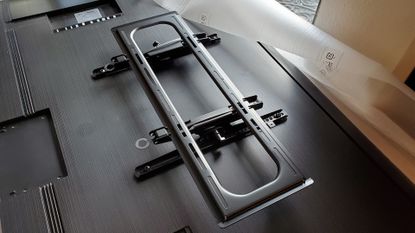

If you’re planning to wall mount your TV, you might feel slightly overwhelmed by the range of brackets on offer: with flat, swivel and full motion options available, there's something to suit anyone, but you'll obviously need to know the differences before you buy.
That's what we're here for: we'll help you buy the best TV wall mount bracket that suits you, and what do do next. First you need to decide how and where to install your TV, and we've got a TV wall mounting tips guide to help you with exactly that. Then you need to choose the wall mount that’s best for you – so let's dig into what you should know.
There are plenty of brackets to choose from, with flat, swivel and full motion options available, but before you decide on the best one, you’ll need to know which type of VESA mount your TV is compatible with. VESA stands for Video Electronics Standard Association, and this organisation has produced a series of standardised bracket fittings for wall mounting TVs.
In order to establish which type of bracket fits your TV, you can either check the published specs for your set from the manufacturer, or you can physically look at the back panel. You’ll see four tapped holes arranged in a square or rectangle, which correspond to screw-holes on the matching VESA bracket. For example: if the holes are in a square and each is separated by a distance of 200mm, you need a 200x200 VESA mount.
Once you’ve established the type of VESA bracket your TV supports, it’s time to choose the most appropriate TV wall mount. We’ll run through the main options, explaining their pros and cons.
If you haven't chosen your TV yet, don't forget to read our guide to the best TVs, best TVs under £1000, best TV under $1000, and best TV under £500!
Full motion vs swivel vs fixed TV mounts explained
Flat bracket
Sign up to the T3 newsletter for smarter living straight to your inbox
Get all the latest news, reviews, deals and buying guides on gorgeous tech, home and active products from the T3 experts
This is generally the cheapest and easiest wall mount to install. All you need to do is screw the bracket to the wall, and hang the TV onto the bracket. The resulting installation will look tidy and save space, plus if your TV is ultra-thin this approach really shows off that aspect.
If you’re planning on mounting your TV on a stud wall, you have to use a flat bracket because the weight of the TV and bracket is evenly distributed, and directed down through the wall itself. With any other type of mount, the weight of the TV can act as a fulcrum and tear the bracket off.
For similar reasons, a flat mount is ideal for very large screen sizes, whereas other types of bracket will struggle to support the increased weight.
Manufacturer-specific brackets
This is essentially a sub-set of flat brackets, and relates to bespoke mounts produced by manufacturers to complement their specific TVs. Samsung offers an optional ‘slim-fit’ or ‘no-gap’ bracket for some of its higher-end TVs, which is designed to fit flush with the wall. Alternatively, LG’s G Series of OLED TVs are specifically designed for wall mounting, and actually come with a dedicated bracket in the box but no stand.
Swivel brackets
This type of wall mount allows you to move and angle the TV to a certain degree, and usually comes in one of two flavours: those that swivel left and right; and those that tilt up and down.
The former are very useful in wide rooms, where people can be viewing the TV from an extreme angle. A bracket that swivels left and right allows a specific viewer to see picture head-on, and this can make a big difference with LCD TVs that often have narrow optimal viewing angles.
Brackets that can tilt are most often used when a TV is mounted high – over a fireplace, say – and by angling the screen downwards it makes for a more comfortable viewing experience. As with swivel mounts, this type of bracket can be very effective with LCD TVs because their viewing angles can be limited in the vertical as well as horizontal plane.
Full-motion brackets
This type of bracket is often referred to as a cantilevered mount, and not only offers movement from left to right, as well as up and down, but can also be pulled away from the wall.
This approach offers plenty of flexibility when it comes to viewing the TV, but also allows you to tidily store it up against the wall when not in use. It’s obviously important that the bracket can handle the weight of your TV, and that it’s securely fixed to the wall. For this reason, cantilevered mounts are not suited for very large screen sizes, and should never be used on a stud wall.
Motorised brackets
If you really want to impress your friends, and have the necessary budget, you could even go for a motorised wall mount. This type of bracket is basically a full-motion mount with a motor and a remote control, and while it’s more expensive and harder to install, it’s fun being able to adjust the angle of viewing from the comfort of your sofa.
Steve Withers is a professional calibrator and freelance journalist who regularly contributes to T3, reviewing audio and video products, and writing articles. Steve has been writing about audio and video products for over ten years and, along with T3, he also contributes to TechRadar, Trusted Reviews, Expert Reviews, AVForums, Pocket-lint, Home Cinema Choice, and Wired. Steve is Level 2 certified with THX, the Imaging Science Foundation (ISF) and the Home Acoustics Alliance (HAA). As such, he remains abreast of all AV technology developments and the latest industry standards as we transition into a new era in home video and audio.
-
 When it comes to a new PC, I’m in no rush to upgrade
When it comes to a new PC, I’m in no rush to upgradeRemembering what’s happened in the past, Jon Bentley is happy to play the waiting game for a computer upgrade
By Jon Bentley Published
-
 Push-pull-legs vs. upper/lower body workouts: which split is best?
Push-pull-legs vs. upper/lower body workouts: which split is best?Maximise exercise volume to pack on serious muscle with these time-saving workout options
By Leon Poultney Published
-
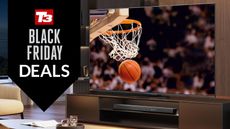 Early Black Friday deal sees price of massive 75-inch TV slashed
Early Black Friday deal sees price of massive 75-inch TV slashedYou'll even get a free copy of NBA 2k25
By Sam Cross Published
-
 Your Samsung TV just got its biggest free upgrade yet
Your Samsung TV just got its biggest free upgrade yetOne UI is rolling out to the latest Samsung TVs now
By Britta O'Boyle Published
-
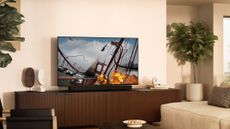 Best Sony TVs 2024: from Bravia 9 Mini LED to Bravia 8 OLED and beyond
Best Sony TVs 2024: from Bravia 9 Mini LED to Bravia 8 OLED and beyondExplaining Sony's range of 2024 TVs, including new naming strategy and range of technologies
By Chris Hall Published
-
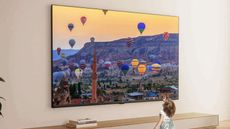 This ultra-bright mini-LED TV is the display of my dreams
This ultra-bright mini-LED TV is the display of my dreamsTCL's next flagship looks fantastic
By Andy Sansom Published
-
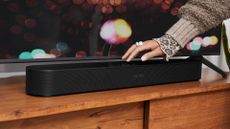 Best soundbar for small TVs 2024: clearer, deeper TV sound in any space
Best soundbar for small TVs 2024: clearer, deeper TV sound in any spaceThe best soundbars for small TVs 2024 can bring you big sound from a compact unit
By Simon Lucas Last updated
-
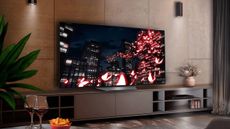 LG TV owners just got Apple TV+ for free
LG TV owners just got Apple TV+ for freeNo matter if you have an LG OLED TV or an LED model, you just got Apple TV+ for free
By Robert Jones Published
-
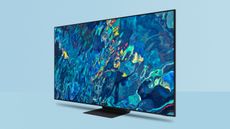 Samsung smart TV owners just got a welcome image upgrade
Samsung smart TV owners just got a welcome image upgradeHDR10+ comes to the Apple TV app on Samsung Smart TVs
By Carrie Marshall Published
-
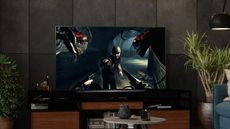 My LG C1 OLED TV makes The Darkness look incredible on Xbox Series X
My LG C1 OLED TV makes The Darkness look incredible on Xbox Series XThis classic first-person shooter is taken to a new level of awesome thanks to OLED TV tech
By Robert Jones Last updated